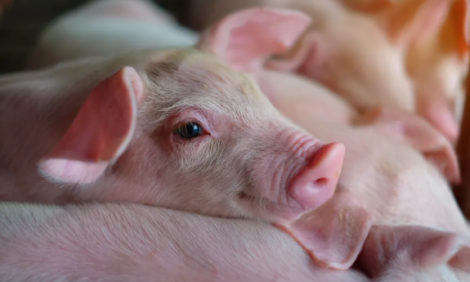



Food Outlook – Meat and Meat Products
Global meat markets in 2012 are expected to see a recovery of supplies in traditionally importing countries and strong competition for markets, according to the latest Food Outlook report from FAO. Near record prices are constraining consumption growth.Meat Prices Hover at Near–Record Levels
Global meat markets are likely to face heightened trade
competition in 2012, at the same time that recovering
meat production in Asia is set to dampen growth in global
import demand. Overall, meat trade is expected to expand
by two per cent, to 29.2 million tonnes, much of which is
anticipated to be taken up by developing country exporters,
which could increase their share of the global trade to 44
per cent.
Disease outbreaks in 2011, drought–reduced cattle
inventories and high feed costs sustained international meat prices to near record levels in the first quarter of 2012. In
April, the FAO meat price index edged up to 182 points,
surpassing the record 181 points registered in November
2011.


Indications of slowing import demand, especially for pig and poultry meats, portents a potential moderation of meat prices in the coming months, which, along with high feed costs, is raising concern about the profitability of the meat sector in 2012.

Pig Meat
As disease concerns in Asia abate, the pig meat sector is poised for a quick recovery
After last year’s drop, global pig meat production is expected
to rebound by 2.6 per cent in 2012 to 111.7 million tonnes,
underpinned by gains in Asia due to reduced incidence of
disease. In the region, policy support, growing investments and favourable market returns, particularly in China, are
behind an anticipated four per cent expansion in the region’s
output to 62.8 million tonnes. The sector may also recover
in Japan, following a rebuilding of sow inventories and a
return to normal piglet births in provinces affected by the
nuclear fallout in 2011. Investments in breeding and feed
industries in Viet Nam will support output growth, while a
rebuilding of FMD-depleted inventories in the Republic of
Korea is stimulating a 20 per cent production recovery.
In South America, high beef prices are indirectly
supporting the expansion of the pig meat sector in Brazil,
Chile and Colombia while, in Argentina, sporadic
restrictions on pig meat imports from Brazil are creating
incentives for investment. The recognition of Mexico
as free of classical swine fever has opened new market
access opportunities which, combined with investment in
new breeding lines, supports an increase of the country’s
production and exports in 2012.
Anticipation of new EU environmental regulations that
will become effective in 2013 has catalysed a restructuring
and concentration of hog operations that may translate
into fewer pigs and lower production in 2012.
Despite tight
margins, a shift by consumers in North America from beef
to lower priced meat products is expected to strengthen
demand and translate into higher production. Investment–driven
gains in the Russian Federation are foreseen to
boost production by five per cent despite persistent occurrences
of African swine fever.
Pig meat trade may decline in 2012 as Asian import demand falters
After witnessing double-digit increases in Asian import
demand in 2011 due to its disease-reduced output, improved
production in the region is forecast to result in global
pig meat trade falling to 7.0 million tonnes in 2012.
Reduced
purchases by China, the Republic of Korea and Japan,
amid large supplies, underlie this expected contraction.
This is despite the expected ratification by the Russian
Federation of the WTO accession treaty later this year and
the signing of a free trade agreement between the Republic
of Korea and the United States. It is clear that the Russian
Federation will only ease restrictions on pig meat imports
when it officially joins the WTO in mid-2012. Until then,
imports by the country will be negatively affected by a
reduction of its tariff-rate import quota from 470,000 tonnes
in 2011 to 400,000 tonnes this year, which may result in
smaller pig meat purchases.
By contrast, imports by Chile,
Colombia, Mexico and Uruguay look set to increase, while
Argentina’s “off-and-on” restrictions on imports of Brazilian
product may lower deliveries to the country.
Declining trade prospects in 2012 set the stage for
considerable competition among the major exporters –
the United States, the EU, Canada and Brazil – which
together account for nearly 90 per cent of global trade.
Lingering Russian restrictions on imports of Brazilian products
may contribute to lower exports from Brazil in 2012, while
benefiting smaller international suppliers, such as Chile and
Mexico, but also the United States and Canada.
Further Reading
| - | You can view the full report by clicking here. |
|
| - | Go to our news item on this story by clicking here. |
May 2012








